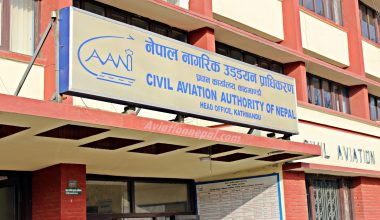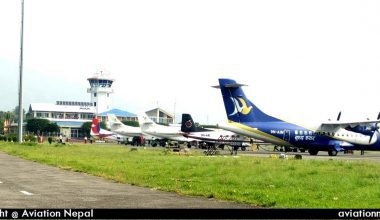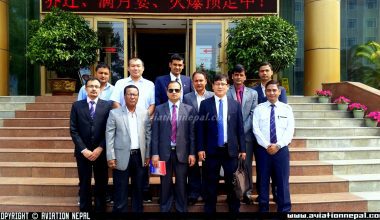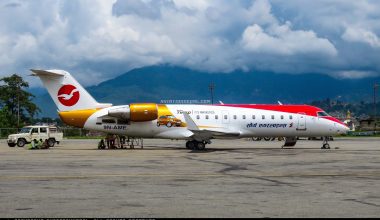-KATHMANDU
The Cabinet has given an approval for temporary relaxation of civil aviation rules on 21st September, 2018 (Friday), which will enable to increase market share of domestic airlines on international routes.
Earlier, the Tourism Ministry last July, had amendment the guidelines to obtain international flying license to the Cabinet. The ministry has been reviewing the existing rules regarding domestic airlines approval for operating international flights.
The existing rule requires 5 years of domestic flying experience and at least three aircraft in the fleet to gain the international flight permissions. After the approval of the amendment guidelines a forty five day notice will be issued upon inviting expressions of interest (EOI) from the domestic airlines. The ministry has planned to grant international licenses to at least two new passenger airlines and one cargo operator, ministry official quoted.
The initiation was taken after the Shree Airlines applied to initiate International flight. The airline has applied for Class C license aiming to give services to neighboring countries which allows conducting flights for three hours.
The ministry issues three categories of airline licenses: A, B and C. Under the old rules, a Class A license is granted to airlines whose flights last longer than three hours, Class B to airlines whose flights last three hours, and Class C to carriers operating flights lasting less than three hours.
Under the proposed new policy, however, licenses will be issued based on the weight of the aircraft. The ministry has proposed Class A licenses for carriers flying aircraft having a maximum take-off weight (MTOW) of more than 125 tones.
Class B license will be issued to carriers flying aircraft with an MTOW of more than 40 tones, and a Class C license will be issued to carriers flying aircraft with an MTOW of less than 40 tones.
Applicants for a Class A license for wide-body operations would be required to have at least NPR1.5 billion rupee (USD13.9 million) of paid-up capital. For airlines seeking a Class B license for narrow-body services, the amount would be NPR1 billion rupees, while Class C applicants seeking to deploy regional jets or turboprops on international routes would need to pay up at least NPR500 million rupees. Airlines seeking a Class C license would also still need to have a minimum of three aircraft in their fleet and add an extra NPR100 million rupee of paid-up capital per every aircraft above this number.
The guidelines need to be reviewed every three years; but the government has not reviewed them since March 2010. The last time the government issued a license to operate international flights was in 2011 to the now defunct BB Airways. Civil Aviation Bill gets the go-ahead.
The Cabinet has given in-principle approval for the Tourism Ministry to draft a new Civil Aviation Bill that envisages splitting the Civil Aviation Authority of Nepal (CAAN) into two entities—regulator and service provider. The government has been working on the new law for the last nine years.
Government spokesperson and Minister for Information and Communications Gokul Banskota said on Friday that the new law will break up CAAN’s existing function as a service provider and regulator to facilitate stringent enforcement of safety measures.
Currently, CAAN is functioning as both regulator and service provider from the same office, and there is no clear demarcation between its duties and organizational structure.
Once the bill is signed into law, it will supersede two existing laws—the Civil Aviation Act 1959 and Nepal Civil Aviation Authority Act 1996. As per the draft bill, CAAN will continue to act as regulator while a separate Airport and Air Navigation Services will be set up to operate as service provider. (PR)






